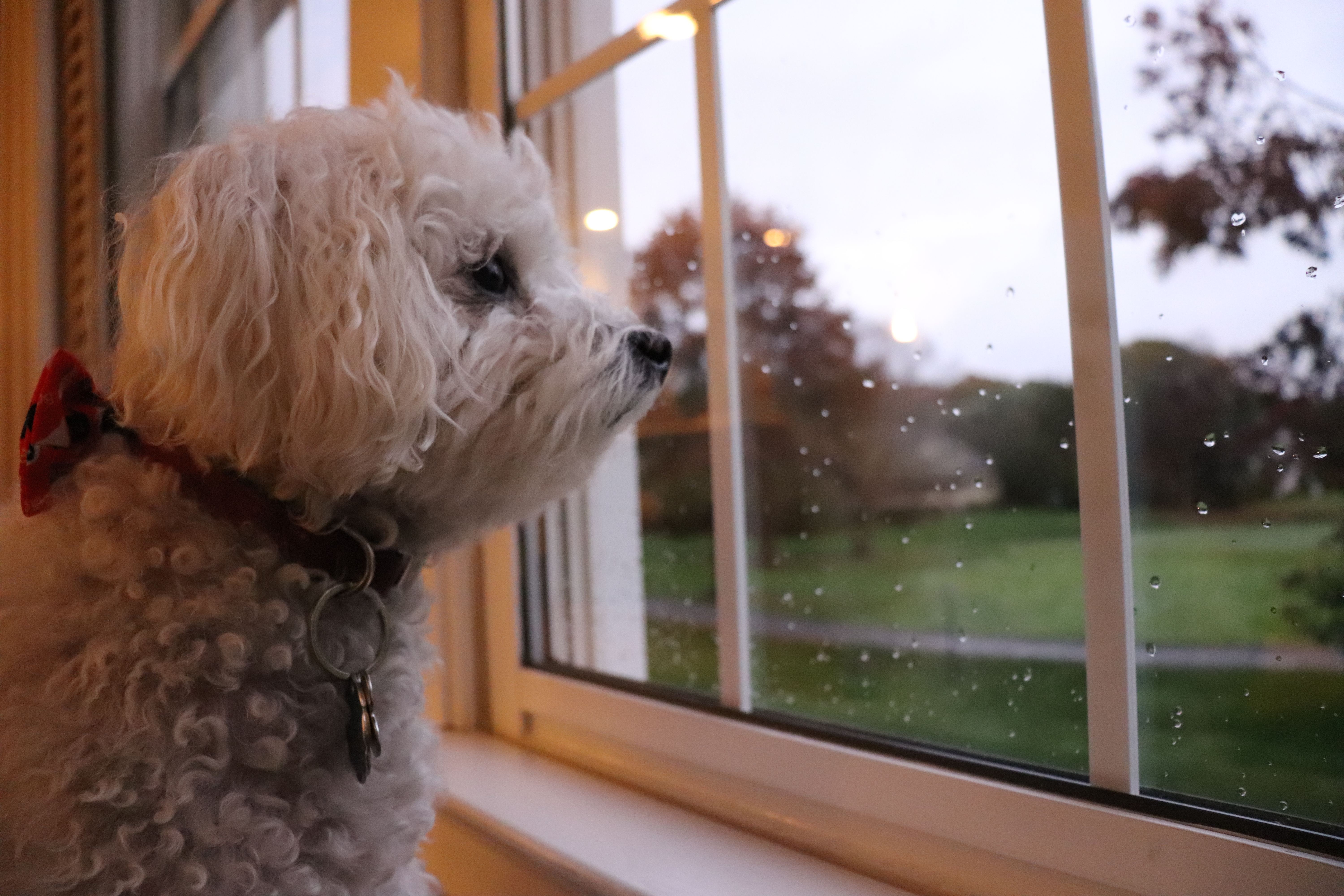
This photo could’ve been taken earlier in the day as my dog enjoys looking out the window into the yard, but I decided to wait until after the rain storm coming later in the day. I did this because I wanted to wait for the right moment. Gitner talks about how moments are crucial to arousing emotion and empathy in his book Multimedia Storytelling for Digital Communicators. I knew by framing my dog close-up and having white fur he would be the center of attention, but I also wanted to draw attention to him looking outside. Using the window frames I drew attention to the passing rainstorm and the light coming from the back suggests a later in the day setting for the photo.
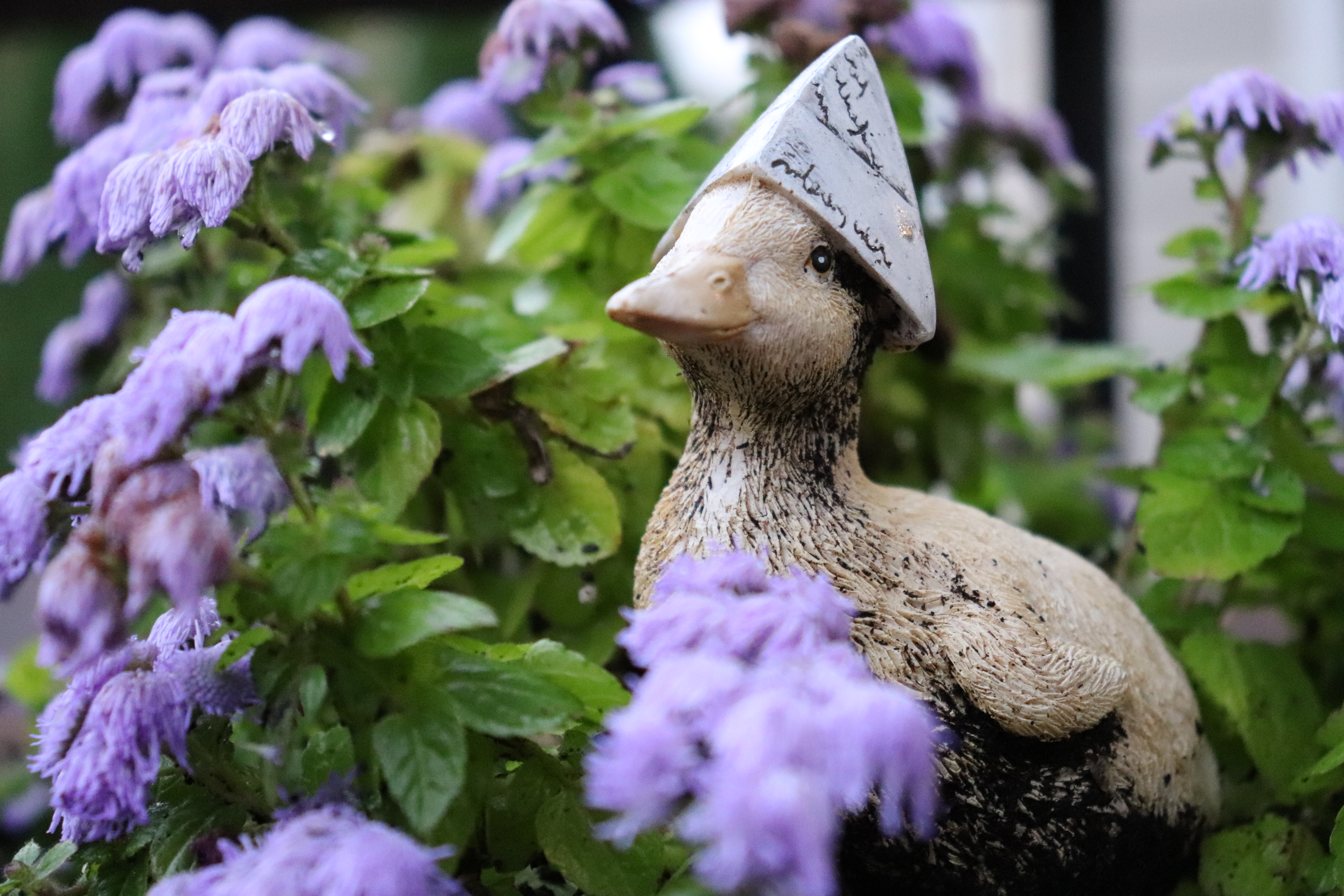
By putting the camera closer to a person or object, it can help to create a better relationship between the viewer and the subject according to Gitner. The close-up of this duck statue helps to suggest a sense of curiosity and adventure given his newspaper hat and dirty feet and fur possibly from his journey. The framing of the flowers and color purple were a perfect contrast to each other as they are opposite on the color wheel.
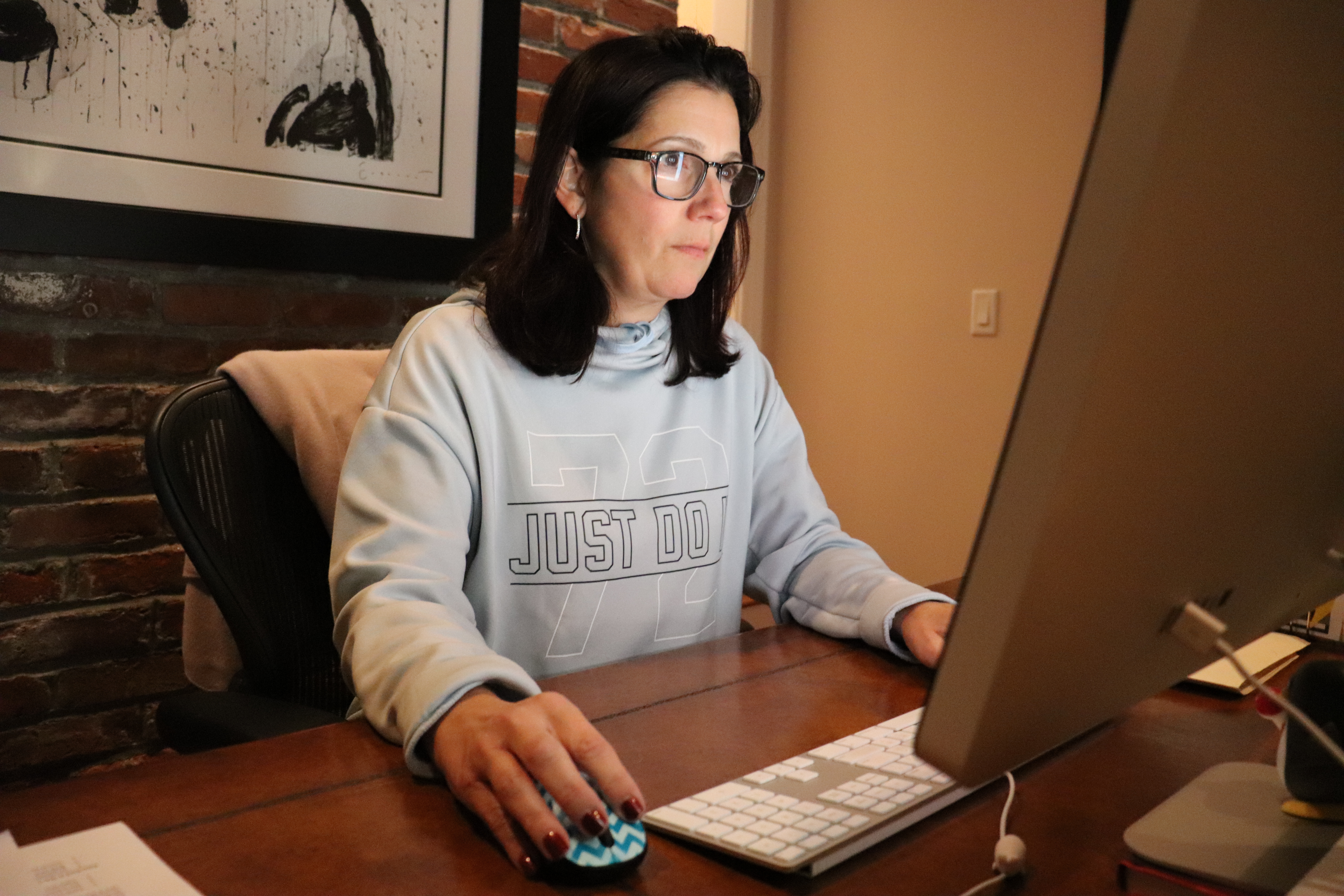
Lighting is important in any picture when it comes to exposure and actually being able to see the image clearly (unless otherwise intended) but it also serves as a visual storytelling tool. Lighting can help with storytelling as it is able to add deeper meaning and depth to an otherwise flat picture such as with the use of shadows. For this picture I wanted to relay the story of working late. I knew to get this across I wanted the strongest light to be the blue light emitted from the computer which can also be seen in the reflection of the glasses. I also knew that the rest of the room should have minimal to no additional lighting so I dimmed the lights. I also waited for the right moment to take the picture to help get the right body language across and not have my subject worry about the camera as Gitner brings up.
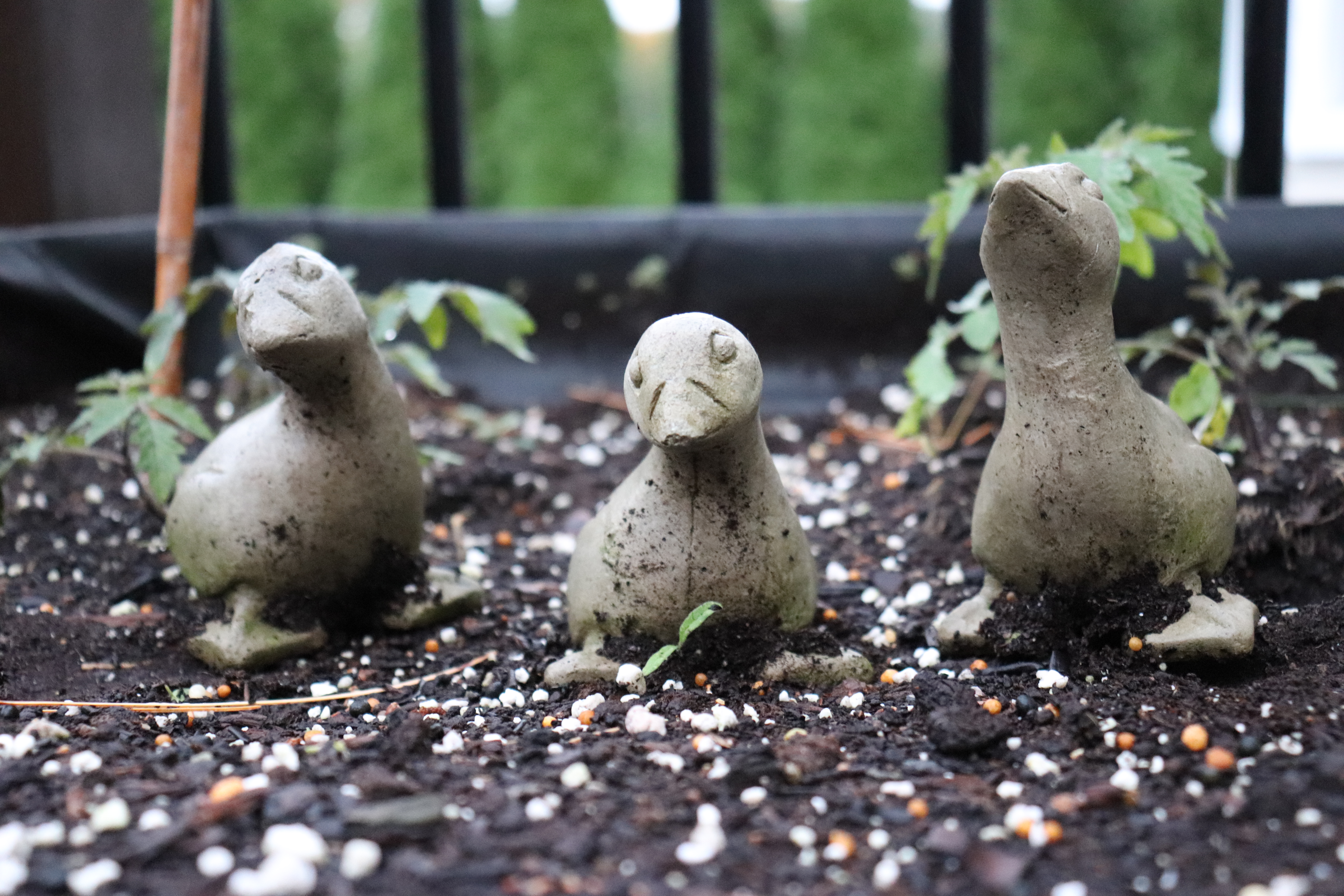
The ducklings in the garden help to show a sense of relevancy for the viewers. Each duck shows off a different personality given where they are looking and how they are interacting with the world around them which can help draw viewers to the duckling they most relate to. The composition of this shot was discovered through moving the camera to different angles before discovering the strongest story within the scene. The middle duckling chooses to focus its attention on watching the smallest plant in front grow while the others look to the sky hoping to begin their flying soon. The plants also serve as a scale and reference to the age of the ducks. The smallest duck sits beside the smallest plant and the largest one near the tallest one.
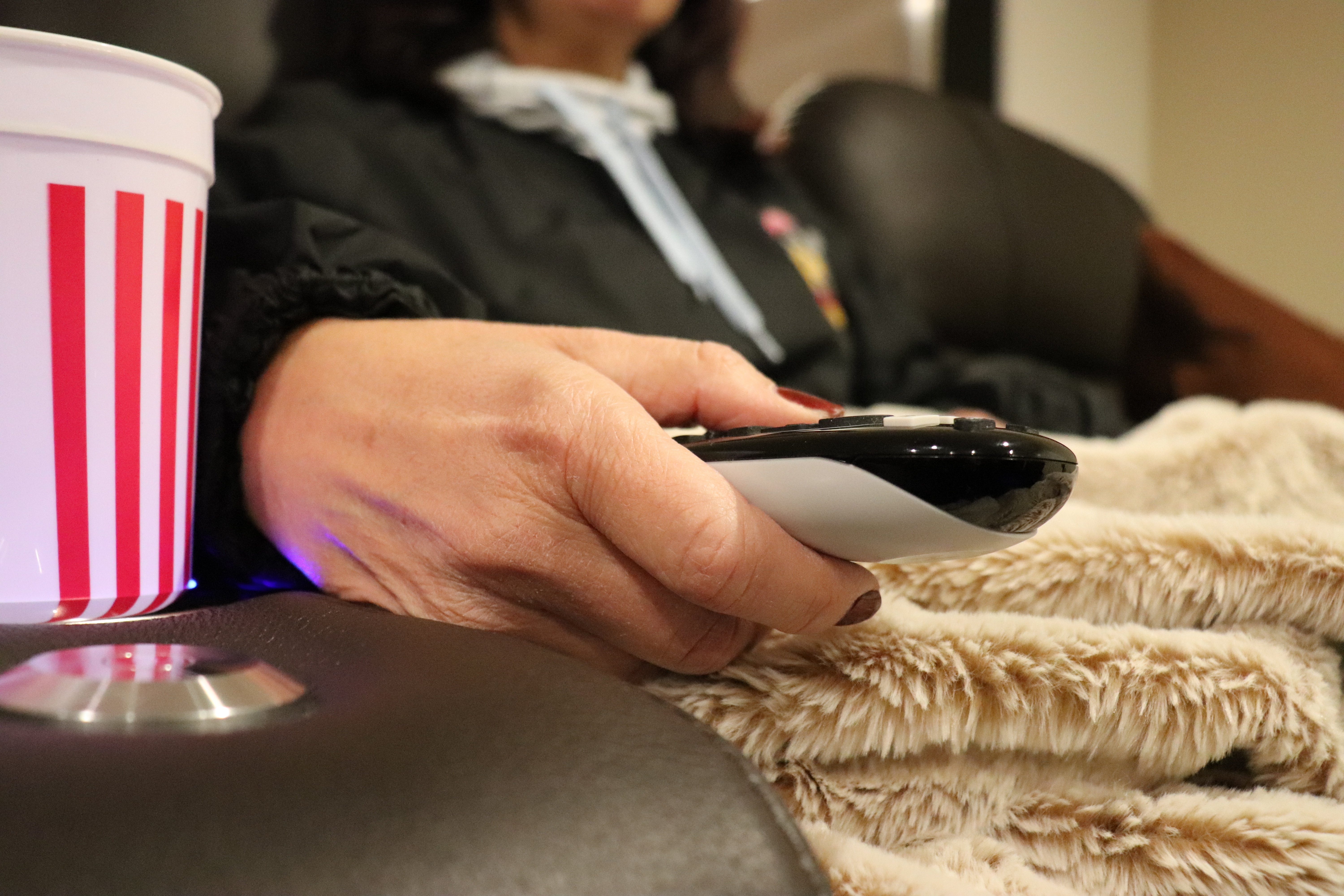
The composition and placement of elements within the scene can tell a story in it of themselves. Through this photo I wanted to create almost a time-lapse of what was happening when the photo was taken as well as beforehand. Gitner calls this adding to the value of the image and storytelling. The more obvious TV remote suggests the subject is watching a show or movie. The blanket is a little more subtle but it does help to set the scene and show the environment is cozy and warm and provide a feeling of this to the viewers who can feel the blanket in their hands. And the popcorn cup helps to put the image of the subject making the popcorn prior to sitting down in the viewer’s head.
Works Cited
“Chapter 1 In What Ways Do We Think about Visual Storytelling Every Day.” Multimedia Storytelling for Digital Communicators in a Multiplatform World, by Seth Gitner, Routledge, 2016.
“Chapter 1: The Rise of Visual Storytelling.” The Power of Visual Storytelling: How to Use Visuals, Videos, and Social Media to 1Market Your Brand, by Ekaterina Walter and Jessica Gioglio, McGraw-Hill, 2014.
“Chapter 2 Storytelling.” Essentials of Visual Communication, by Bo Bergström, Laurence King, 2009.
Klanten, Robert, and Andrew Losowsky. “Visual Storytelling: Inspiring a New Visual Language.” Visual Storytelling: Inspiring a New Visual Language, Gestalten-Verl., 2012.
“Worth 1,000 Words: The 4 Principles of Visual Storytelling.” Action Graphics, 26 July 2018, actiongraphicsnj.com/blog/4-principles-visual-storytelling/.





I think you did a really great job with all of these photos. The first two especially stand out with the different colors being used and the shallow depths of focus. I think the purple in your second picture really makes that one special. I love how the story you wrote for your fourth photo also brought new life to the picture. I didn’t even notice the little plant sitting in front of the middle duck until you brought it to light. The only real criticism I have is that on the third photo, I think a more odd perspective would be interesting to add another layer of story. The shot itself is extremely well-composed, but I think possibly focusing on something specific like the mouse or her eyes could’ve created a more nuanced story. Overall, really cool though.
Hey Bret!
I love your five photos that tell a story! I think you did a great job portraying the possibility of each story through every photo, and that you connected each to Gitner’s writings. I believe you related each back to the writings in a thoughtful way, touching on things like adding value to an image and getting close up enough to create an emotional connection between the subject and the viewer.
My favorite photo has to be of your dog. Not only is it adorable, but I love the thought process you used to set up the shot. Yes, you definitely could’ve taken it at any point in the day because dogs love looking out windows, but you chose to wait until it was rainy and darker to showcase a contrast between the white fur and the gloom of the outside world. I totally agree that this was the right moment, and the fact that you waited for it shows that you are an aspiring professional. Great work.